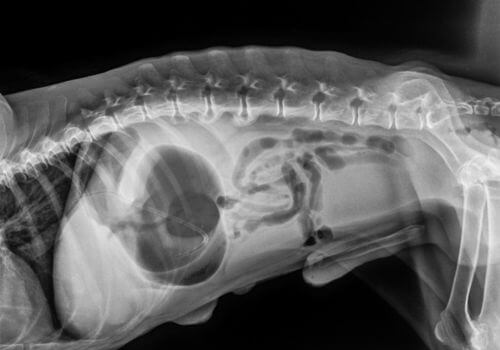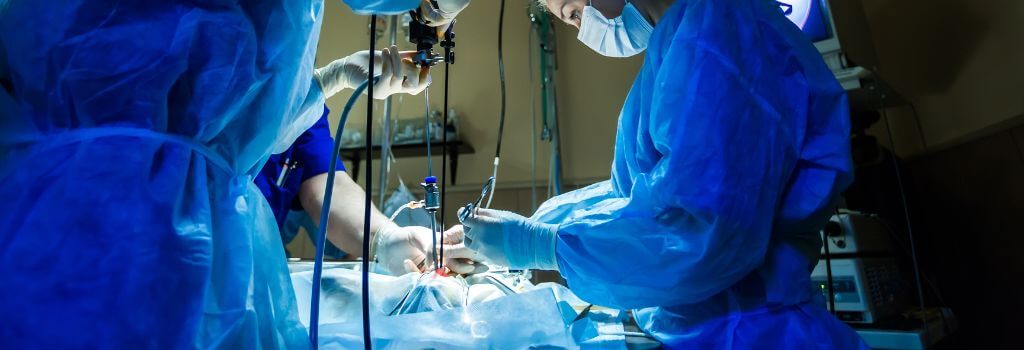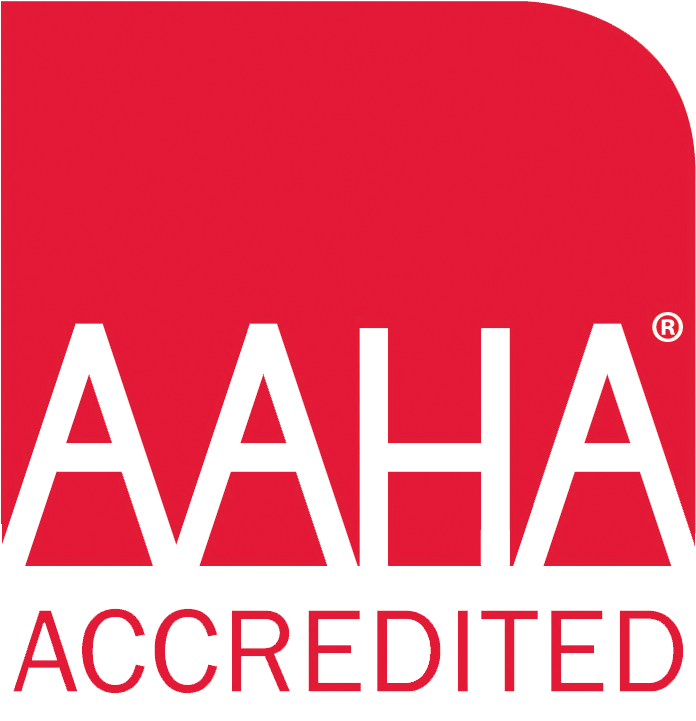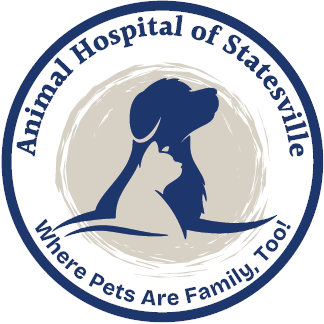If you have a large or deep-chested dog, you might have heard your veterinarian or even other pet owners talk about the risks of bloat. Despite the name, bloat is a serious and rapidly progressing condition that affects more than 36,000 dogs each year, and sadly, 30% of those cases are fatal.
The good news? There’s a safe and effective way to help prevent bloat so you can breathe a little easier and your dog can live more comfortably. It’s called gastropexy surgery. In this post, we'll talk about how the surgery works, what you can expect while your dog recovers, and why it's a smart move for your dog's health in the long run.
What Is a Gastropexy?
A gastropexy is a surgical procedure in which the lower portion of a dog’s stomach (pyloric antrum) is permanently attached to the right body wall to prevent gastric dilatation and volvulus (GDV), commonly known to pet owners as bloat.

Bloat is a serious and often life-threatening condition that happens when a dog’s stomach quickly fills with gas, food, or fluid and then twists on itself. This twisting cuts off blood flow to the stomach and other vital organs, causing shock, severe pain, and, if not treated quickly, death. Bloat in dogs is always a medical emergency, and veterinary attention is critical.
Gastropexy to Prevent Bloat in Dogs
Gastropexy surgery for dogs is one of the most effective methods for not only preventing instances of bloat in dogs, but also lessening the severity and allowing additional time for veterinary intervention; however, having your dog undergo gastropexy surgery prior to developing bloat is always the preferred and more responsible option.
Veterinarians like myself see gastropexy as an essential element of preventive medicine for at-risk breeds for a number of reasons. To start, prophylactic gastropexy is much cheaper and safer than treating a GDV with a gastropexy at the time of emergency surgery for GDV. GDV is a life-threatening situation, and commonly, during emergency surgery, other severe issues have to be addressed, such as splenectomy and gastric resection.
While gastropexy can be performed as a treatment for current bloat, it is not always effective, and these complications can result in a poor prognosis for the affected dog. Veterinary studies on dogs treated with gastropexy during an ongoing instance of bloat have been shown to have an overall mortality rate between 10 and 28%. Outcomes are often improved with prophylactic gastropexy, as it prevents these complications from occurring by preventing bloat at the root of the condition – the twisting of the stomach.
Without gastropexy, GDV is likely to recur in 55% to 75% of cases, according to research, and affected dogs have a significantly shorter median survival time compared to those who undergo surgical treatment.
Laparoscopic Gastropexy vs. Traditional Gastropexy
When it comes to gastropexies, there are a few different ways that a veterinarian can approach the surgery based on their individual proficiencies and the equipment available at their specific clinic. The two most common and widely preferred forms of gastropexy surgery for dogs are the Incisional Gastropexy – sometimes referred to as a traditional gastropexy – and the Laparoscopic-Assisted Gastropexy.
- Traditional Gastropexy – This is a simple and widely used technique for gastropexy where an incision is made in the stomach and the abdominal wall, allowing them to heal together and form a permanent adhesion that prevents twisting.
- Laparoscopic-Assisted Gastropexy – Alternative to the traditional gastropexy, this minimally invasive procedure utilizes small incisions and a camera to guide a veterinarian in the attachment of the stomach to the abdominal wall. With the use of the laparoscope, the incision is much smaller than the one needed for a traditional gastropexy – typically 4-5cm vs a full abdominal incision. This method is often preferred due to it resulting in less pain and a quicker recovery compared to traditional open surgery.
What Breeds Should Get Gastropexy Surgery?
While any dog can develop bloat during their lifetime, the most common dogs that develop this condition are deep-chested breeds. Great Danes are often considered one of the most at-risk breeds for developing bloat, with some research showing that these dogs have over a 40% average lifetime likelihood of a bloat episode.
Other breeds that are considered at-risk for GDV include:
- Weimaraner
- Saint Bernard
- Irish Setter / Gordon Setter
- Standard Poodle
- Doberman Pinscher
- German Shepherd
- Bernese Mountain Dog
- Boxer
- Newfoundland
- Akita
- Old English Bulldog
Deep chest conformation is one of the most notable reasons these dogs are considered to be at-risk breeds. While not as common, some small breeds can develop bloat due to their increased thoracic depth-to-width ratio despite their smaller size.
Dogs that have a family history of GDV or previous episodes of GDV carry an even greater risk of developing the condition. In these cases, prophylactic gastropexy will be strongly recommended to provide better health outcomes for the dog as they age and as the development of bloat becomes more likely.

What to Expect with a Laparoscopic Gastropexy Procedure
At Animal Hospital of Statesville, we have veterinary surgeons specially trained in the use of a laparoscope and generally recommend laparoscopic-assisted gastropexy over traditional gastropexy due to the advantages in both healing and recovery.
Here’s a breakdown of what you can expect when your dog is undergoing a laparoscopic gastropexy.
Timing of the Procedure
Prophylactic gastropexy is often performed at the same time as a spay or neuter to minimize the number of anesthesia events and to prevent GDV early in life. For larger breeds, spay/neuter and gastropexy are typically recommended between 8 months and 1–2 years of age. Puppies younger than 6 months are generally too young for the procedure.
While gastropexy is most commonly done in young dogs as a preventative measure, there is no upper age limit as long as the dog is a good surgical candidate – meaning that they can undergo anesthesia and aren’t likely to have severe medical complications during the procedure. However, dogs with certain comorbidities, such as heart disease, kidney issues, or severe respiratory problems that increase anesthesia risks, may not be ideal candidates for gastropexy. Talking to your veterinarian and reviewing your dog’s medical history can help determine what route is the safest and most effective for your individual dog’s health.
Procedure Duration
- Laparoscopic gastropexy alone: ~30–40 minutes
- Gastropexy with spay/neuter: ~45–60+ minutes (varies by sex and size of the dog)
Recovery and Healing
- Recovery time for laparoscopic gastropexy can differ from dog to dog, but it is most commonly 7–10 days, significantly shorter than the 2–3 weeks required for traditional open gastropexy.
- Pain management typically includes NSAIDs for 3–5 days postoperatively.
- E-collars are recommended to prevent licking of the incisions. Some owners choose to use surgical recovery suits, but they are optional.
Risks & Complications of Laparoscopic Gastropexy
Like any surgery, it is important for pet owners to be aware that there are some complications that can arise during or even after a gastropexy is performed.
Incisional complications are the most common issues after surgery and often result from dogs licking or irritating the surgical site. This is why post-operative care is important. E-collars (Elizabethan collars) or surgical recovery suits are commonly used to prevent dogs from interfering with their incisions and reduce the risk of infection or delayed healing.
Another potential complication is the formation of a seroma, which is where fluid builds and causes swelling at the gastropexy site following the surgery. These, again, can be prevented with proper post-op care by keeping your dog calm and limiting their activity during their recovery period. If a seroma does form, it typically can be handled by your veterinarian in most cases.
Overall, complication rates are typically low when patients are not allowed to lick at incisions and recovery instructions are properly followed.
Preventing Bloat in Dogs with Gastropexy & Smart Feeding
Because bloat typically occurs after eating or drinking too quickly, smart feeding and a watchful eye can go a long way in preventing bloat and recognizing signs that your dog may be experiencing it and needs immediate medical attention.
Common signs of bloat in dogs to keep an eye out for include:
- Enlarged, painful abdomen
- Vomiting or retching without producing anything
- Weakness or collapse
- Restlessness and discomfort
- Pale gums
- Elevated heart rate
While a gastropexy helps prevent bloat, it does not eliminate all risks. If any of these symptoms appear after surgery, immediate veterinary attention is required.
Aside from a prophylactic gastropexy, there are other best practices pet owners should be aware of in order to prevent bloat.
- Feed smaller meals throughout the day and slow down how fast your dog eats. Slow-feeder bowls work great for this!
- Avoid feeding your dog high-fat food that could lead to excessive gas production. (Gas can contribute to gastric dilation, which is responsible for 25% of bloat cases in dogs.)
- Always make sure your dog has access to fresh water to support healthy digestion. After intense exercise, offer small amounts of water at a time until your dog has calmed down to help prevent stomach upset or bloating.
However, while these approaches are great for dog owners to employ, laparoscopic gastropexy is always the preferred method to prevent bloat. At the end of the day, performing a prophylactic gastropexy is the best way to prevent a life-threatening condition in dogs and a much safer alternative than dealing with emergency intervention for bloat, which can have severe complications.
If you have questions and you'd like to reach out to us, you can call us directly at 704-802-1280, or you can email us at [email protected]. Don't forget to follow us on social media Facebook, Instagram.


